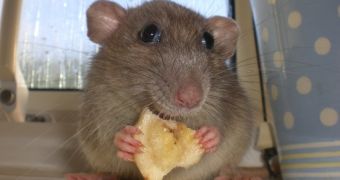As shocking as this may sound, it would appear that it is possible that, at some point in the future, rats that are about the size of sheep – maybe even bigger – will walk the Earth.
What's more, the presence of these oversized rodents on our planet will not be the result of a weird genetics experiment gone horribly wrong. On the contrary, good old evolution will be the one to thank.
In a recent interview, geologist Dr. Jan Zalasiewicz with the University of Leicester in the UK explains that, in order for such giant rats to come to inhabit the Earth, several species of large mammals will have to go extinct.
The researcher goes on to detail that the extinction of said mammals will enable the rats to start growing by putting more resources – be it space or food – at their disposal.
Needless to say, the rats would also have to remain in a place that lost most of its large mammals for a fairly long period in order to even stand at change of becoming as big as today's sheep.
“Given enough time, rats could probably grow to be at least as large as the capybara, the world's largest rodent. If the ecospace was sufficiently empty, then they could get larger still,” Dr. Jan Zalasiewicz said, as cited by Express.
To put things into perspective, it must be said that the average capybara is estimated to tip the scale at about 35-66 kilograms (roughly 77-145 pounds).
While some might say that Dr. Jan Zalasiewicz’s predictions about how rats could one day grow to an impressive size are just crazy talk, the researcher stresses the fact that such phenomena have happened before in the history of our planet.
“In the Cretaceous Period, when the dinosaurs lived, there were mammals, but these were very small, rat and mouse-sized, because dinosaurs occupied the larger ecological niches.”
“Only once the dinosaurs were out of the way did these tiny mammals evolve into many different forms, including some very large and impressive ones: brontotheriums, horses, mastodons, mammoths, rhinoceri and more,” the specialist reportedly told the press.
By the looks of it, rats are the ones most likely to follow in the footsteps of small mammals that lived many years ago due to the fact that they are a highly adaptive species.
What's more, they themselves can cause some species to go extinct simply by sharing their habitat.
As Dr. Jan Zalasiewicz put it, “Rats are one of the best examples of a species that we have helped spread around the world, and that have successfully adapted to many of the new environments that they found themselves in.”
Furthermore, “They are now on many, if not most, islands around the world. Once there, they have out-competed many native species and at times have driven them to extinction. As a result, ecospace is being emptied, and rats are in a good position to re-fill a significant chunk of it, in the mid to far geological future.”

 14 DAY TRIAL //
14 DAY TRIAL //